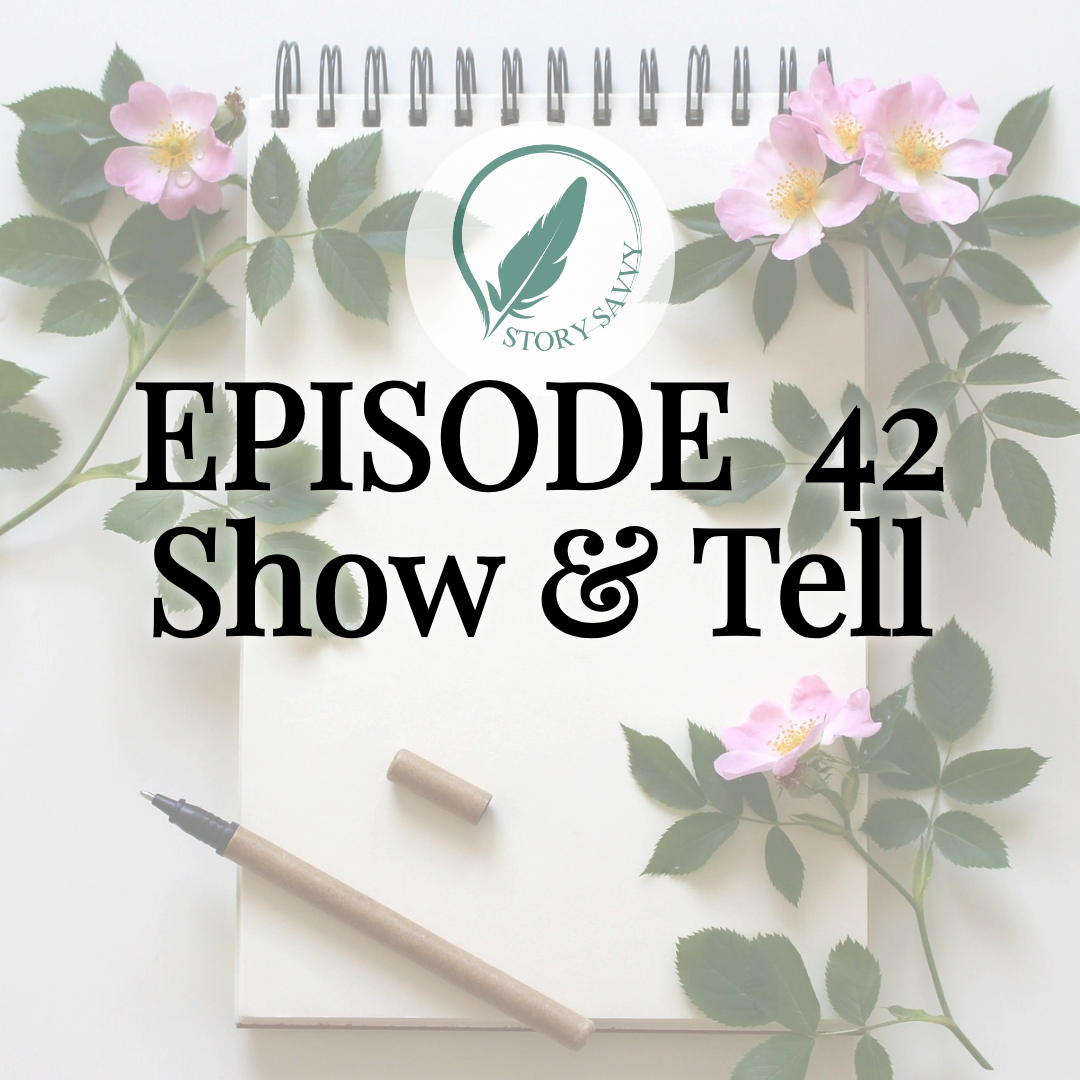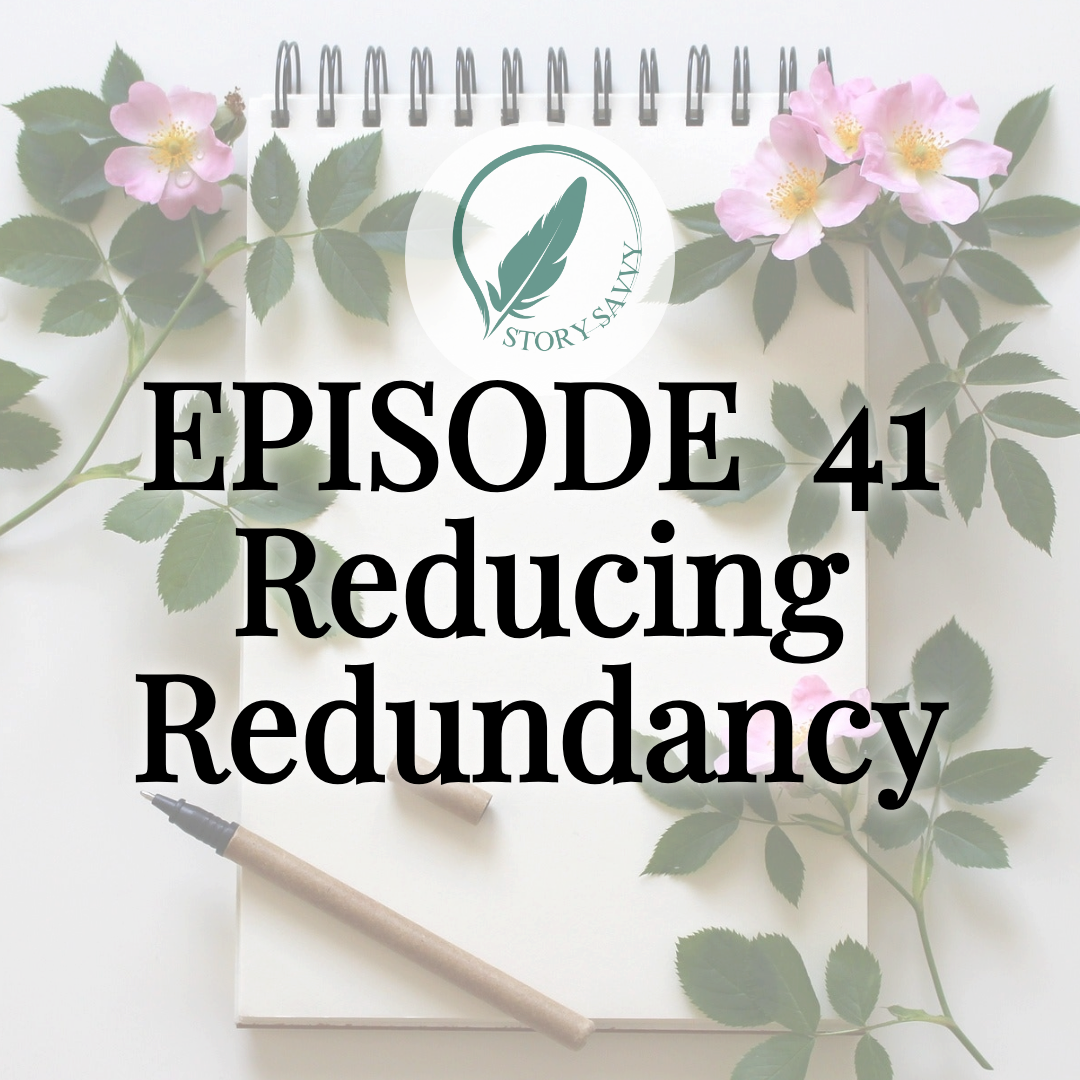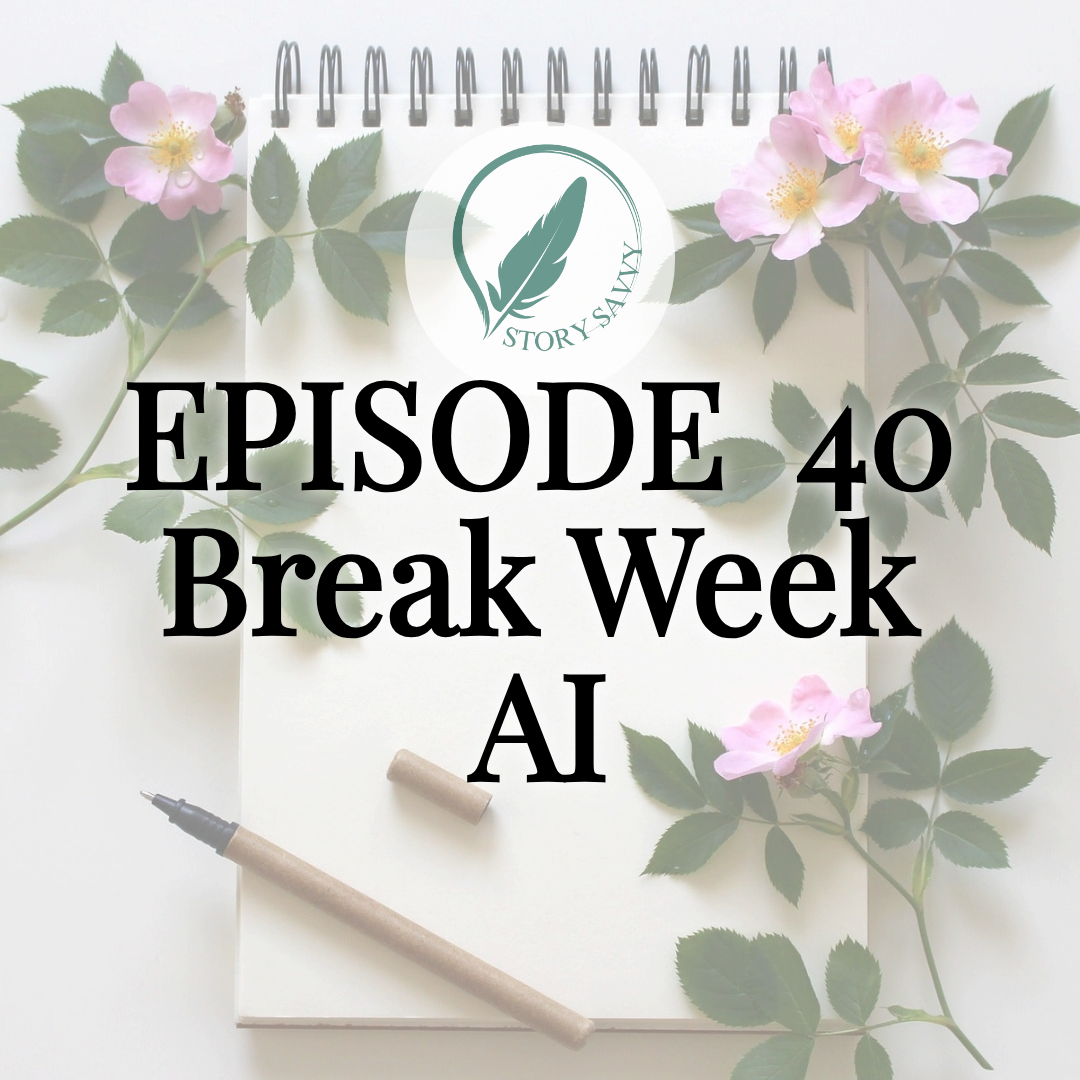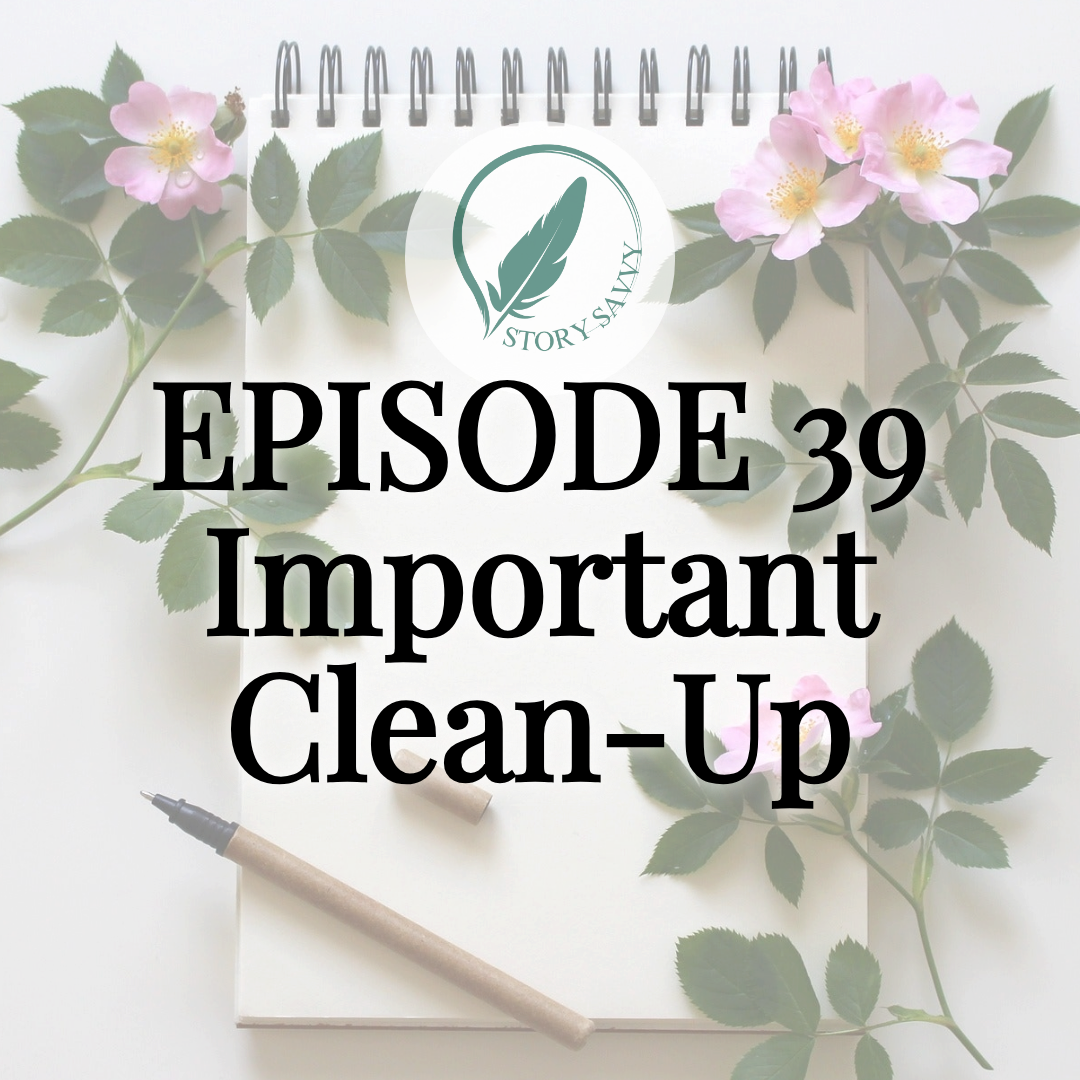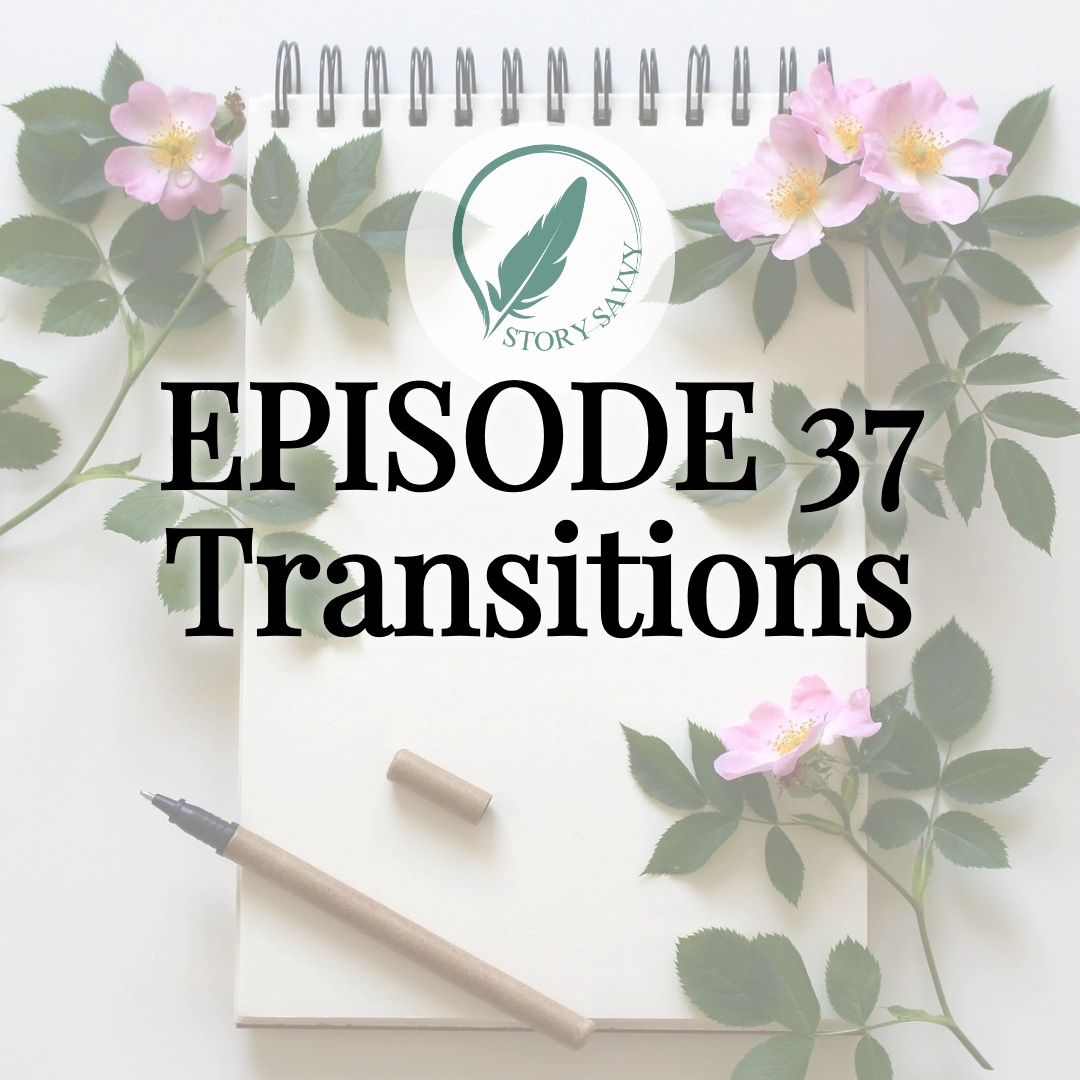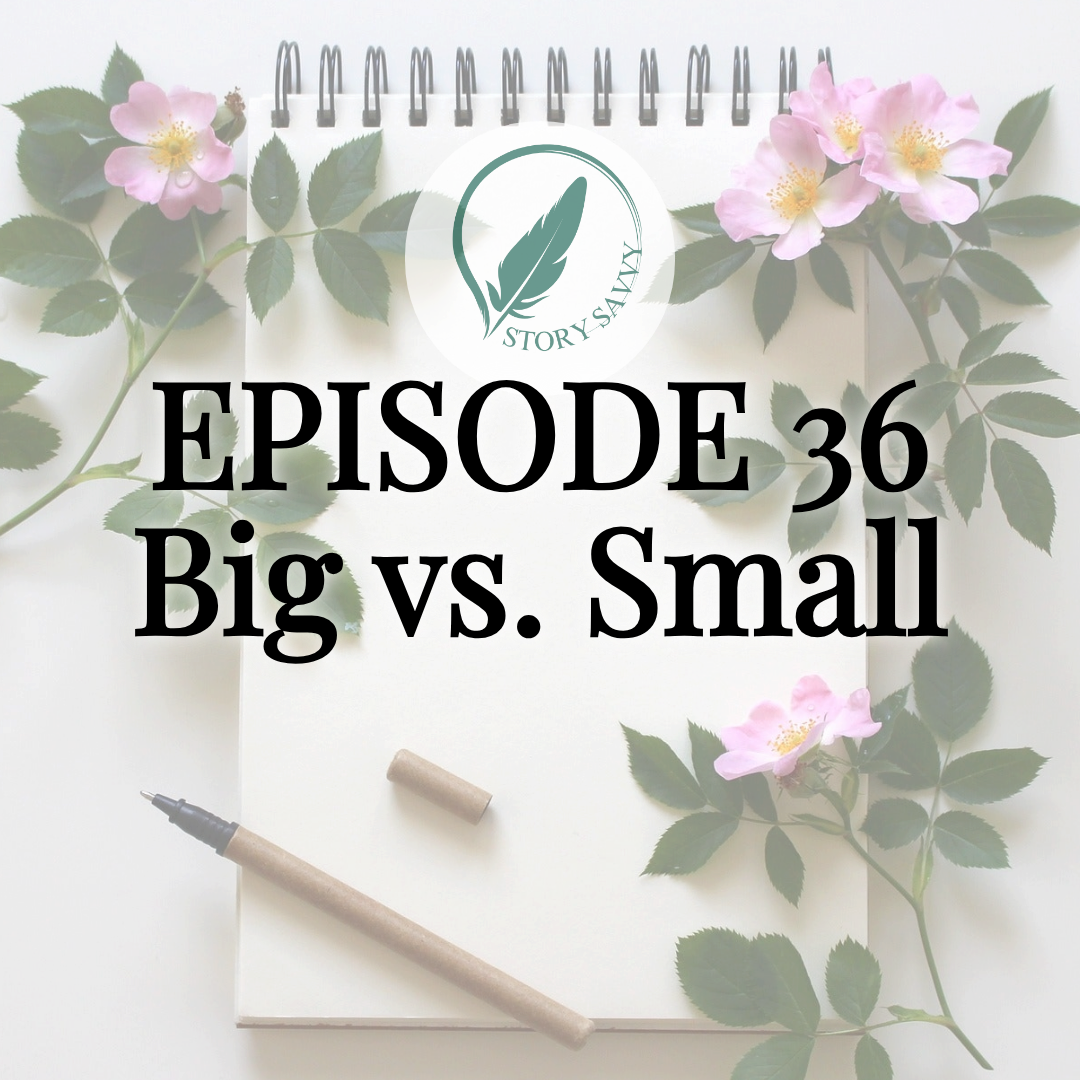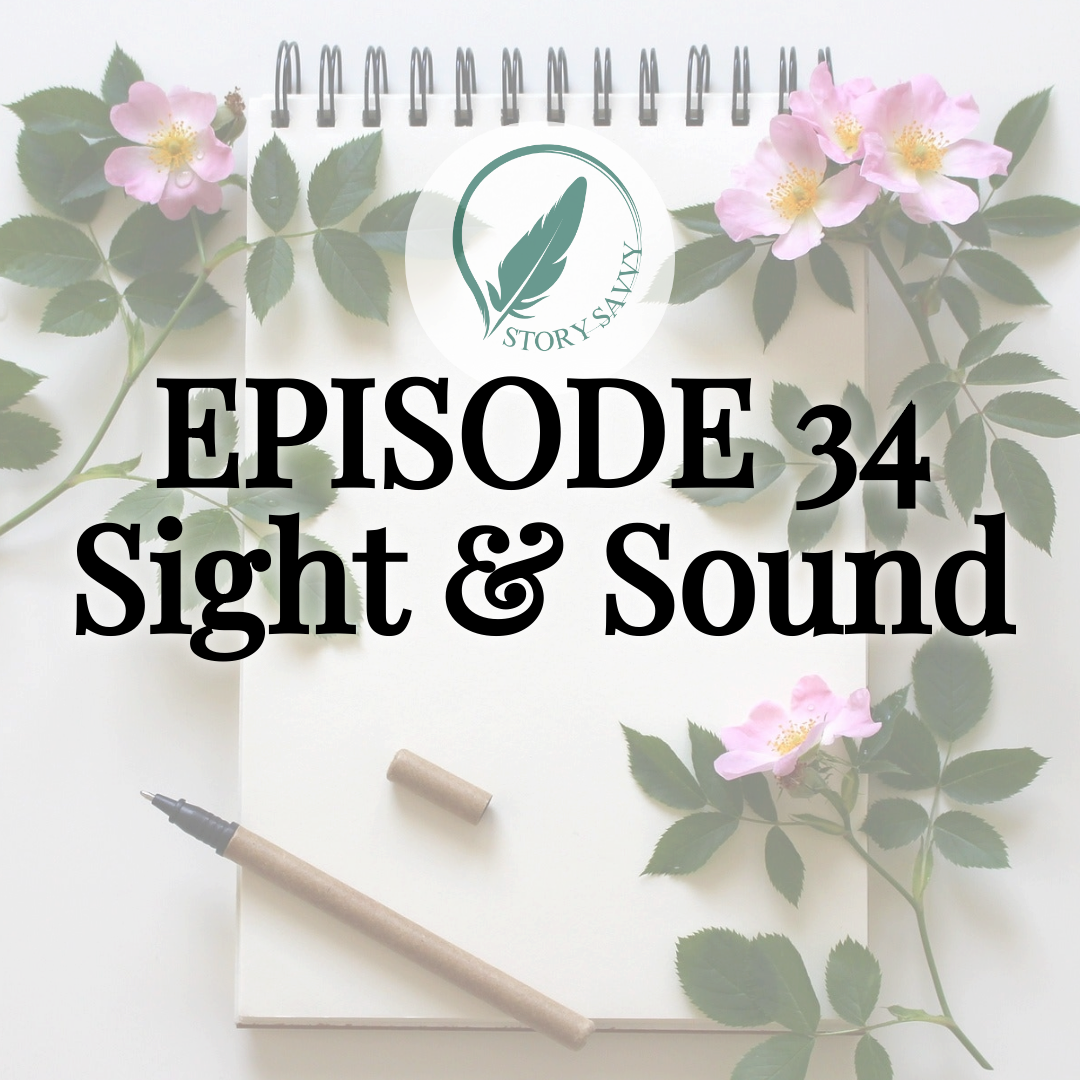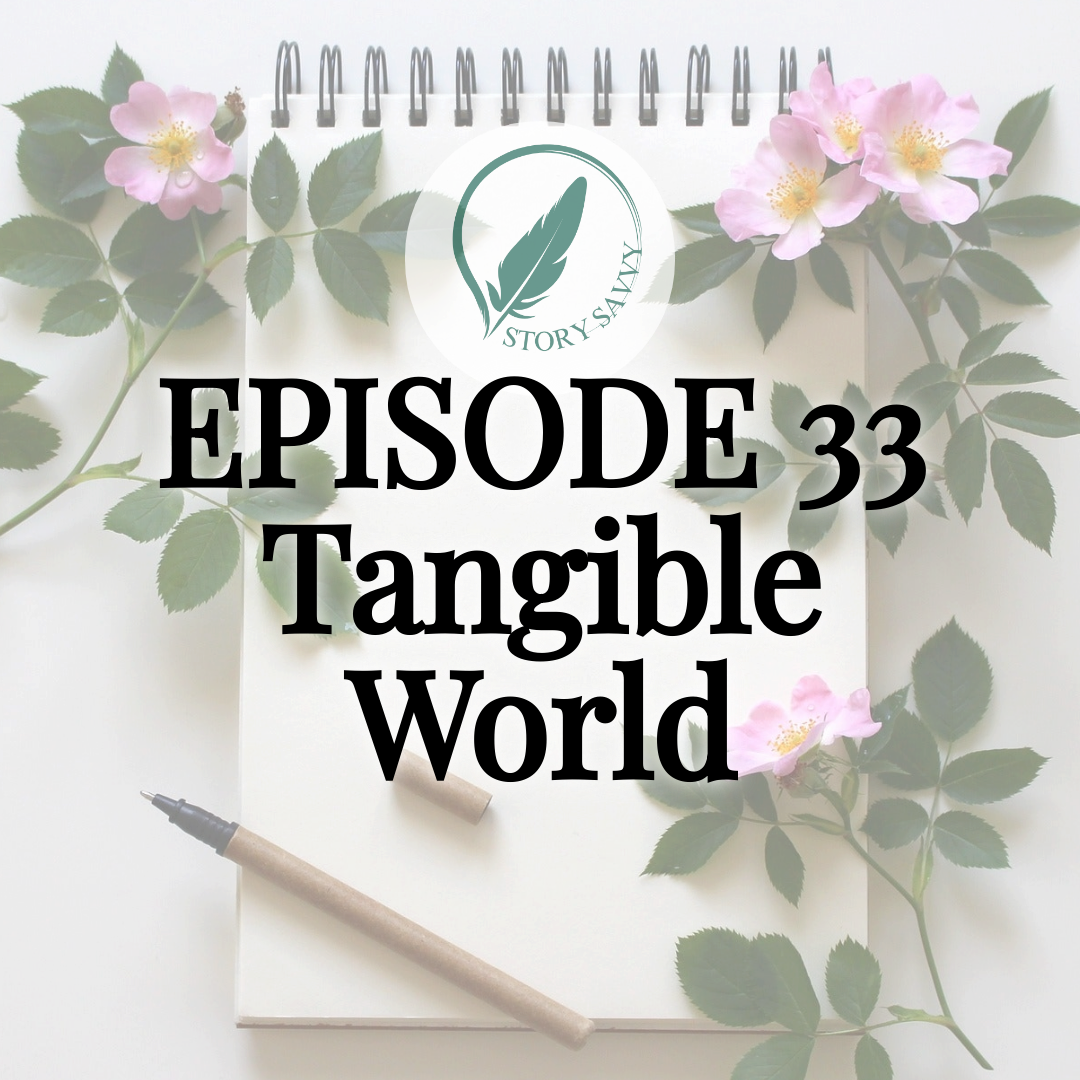Appropriate Intensity: Story Savvy Self-Editing Episode 18
My sincere thanks to Lyndsey Luther for guest-hosting!
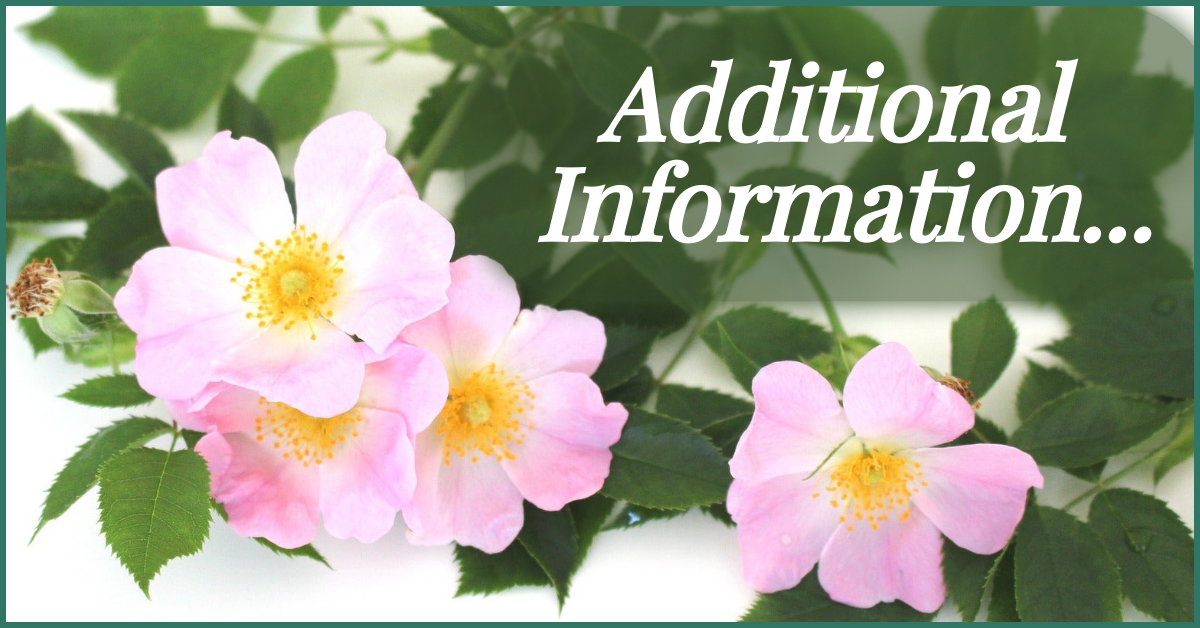
You can find the links to Lindsay's books and social media links in the show notes below! I really appreciate her stepping in on short notice to cover for my usual co-host, Agnes Wolfe.
Episode 18 Overview:
Appropriate Intensity
"Am I "pulling my punches" anywhere in my book where I want to, or could, dial things up? By severity/extremity, action, emotional impact, etc.? Am I taking anything too far to an extreme for my genre, audience, or message?"
Curious about how to get your intensity level just right to make your readers fans? Want to know how to edit your book yourself and learn all about balancing high and low intensity scenes in genre fiction? In this full-length episode of 52-Week Story Savvy, developmental editor Rebecca of Hart Bound Editing and guest host and published fantasy author Lindsay Luther dive deep into self-editing for appropriate intensity, and why it’s so important on so many levels.
This isn’t a grammar lesson—this is about storytelling and self-editing strategy. This episode explores at what level of the story you should be checking the intensity, what standards or guidelines you should be measuring against, and most importantly HOW you can adjust your intensity up or down where you want to, with or without altering other aspect of your story.
In This Episode:
- How can we make increases and decreases in intensity feel grounded and natural?
- Are pacing pacing and intensity related? How do they affect each other?
- Is it possible to turn up the intensity too much or too quickly in early chapters?
- Is there a rule of thumb of how to know when to up or down within our scope?
- How can we adjust our intensity if we DON’T want to change our stakes or goals to do so?
Whether you’re outlining your story or revising your finished draft, this episode will help you hook your ideal readers and turn them into fans by nailing your intensity, and using it like a pro.
Recommended Resources:
- Authors’ Alcove Membership Site – [http://authorsalcove.com]
- Lindsay Luther’s Books – [https://lyndseyluther.com/]
- Book Giveaway – [http://authorsalcove.org]
- Lindsay Luther on social media – [https://lyndseyluther.com/contact/]
See you next week for episode 19: Plot Holes and Character Inconsistency!
Episode 18 Transcript:
Appropriate Intensity
Rebecca Hartwell: Hello and welcome to the Hart Bound Editing Podcast. This is episode 18 of the weekly Story Savvy series, where we tackle the 52 biggest self-editing topics and tips to help you make your good story great as a published author asks me—a developmental editor—all of the questions that you have wanted to. My usual co-host Agnes and I have covered a bunch in this series so far, and last week my guest host Christy and I covered nailing your story stakes.
Today, my new co-host Lyndsey and I are going to take a look at checking and using appropriate intensity in your story, including around those stakes. By the end of the episode, you will hopefully feel confident identifying whether your book is too intense or not intense enough, and how to adjust that if needed.
Joining me to ask all of those questions is Lyndsey Luther, my friend and the fantasy author of Green Cloak. Why don't you tell us a little bit more about you and your stories before we dive in with our first question?
Lyndsey Luther: Sure. I’m really excited to be here today to tackle this really interesting topic of making sure that your story lands just right with your readers. It’s so important.
I've been a fantasy author for about 20 years, although I really only started self-publishing my novels five years ago. Green Cloak is a high fantasy murder mystery with no spice but plenty of innuendo and witty banter. If you like Scott Lynch's Gentleman Bastard series or Jim Buscher's Dresden Files, you'll probably enjoy my work. I've been a regular contributor at Reactor, formerly known as Tor.com for over 10 years, penning the Stormlight Archive rereads and a plethora of other Sanderson-related content. In addition to my own works, I've also been a beta reader for Brandon Sanderson for about 10 years, so I'm always keenly interested in seeing how the editing process of other authors and industry professionals differ or align to the ones that I'm familiar to.
So, let's jump right in, shall we? Are we looking at intensity globally? As in, are we looking at the whole story, or are we looking at it more chapter by chapter?
Rebecca: I would say the latter, so scene by scene or chapter by chapter, but still keeping an eye on where your intensity is topping out or bottoming out overall. Because that is the global impression that you're going to leave. The reader isn't going to remember necessarily what the average was, but they're going to remember the lowest or the highest moments.
Lyndsey: So, what are we measuring against to tell if a scene or the overall book is the wrong intensity in either direction?
Rebecca: First of all, it’s definitely genre, sub-genre and niche. As an example, in a sweet small-town romance, you're going to have very different intensity expectations than you would in a, let's say, taboo mafia romance. Those need to have very different intensities, and that is heavily dictated by what kind of story you're choosing to write, and what genre you're choosing to market it as. Yeah, just getting it wrong for your genre is going to miss the mark, and that's not good.
The second consideration here is your audience. And that's why Agnes and I covered this really, really early in the series. So, two different people could both be writing action adventure, rebellious fantasy. But if your audience is young adult or a middle grade, that has a much lower, in this case, intensity expectation than if you're writing it for, let's say, Grimdark fans. So even if you're writing in a certain genre, knowing who your sub audience is within that genre can be very important.
The third measuring stick to use here is just if you're worried about boring your readers or overwhelming them at specific points, I suggest that you look at the intensity in those specific places, regardless of your genre and audience.
The last point to measure on here is what impressions you wanted to leave with your readers and/or what message you wanted to get across. If you want to leave them thinking about the value of family, that is kind of a lower intensity message than if you want them thinking about the survival of a species on the planetary level.
Lyndsey: That’s definitely higher intensity.
Rebecca: Exactly. So those are the four measuring sticks that I suggest everyone bear in mind. Mind when you're looking at this topic.
Lyndsey: So, what types of things can we use to increase or decrease the intensity of a scene if we feel that it's warranted?
Rebecca: You can look at this as how high the stakes are or low the stakes are, like we talked about in episode 17, which is largely about the physical, tangible, external factors. Or you can look at intensity like sort of the action versus processing rises and falls like I talked about in episode 13, which can be much more of an internal emotional factor. But there are other ways outside of stakes and that pacing consideration to look at around intensity.
Number one, a question that you can ask yourself, is how much are the stakes on the table threatening or affecting the protagonist directly? For example, if the stakes are, let's say, shame, is the protagonist directly the one getting shamed? Or is it secondhand embarrassment, which, to be fair, in some people's cases like mine, is not much different? I hate secondhand embarrassment. And if it is, is the person actually getting shamed someone that is intrinsically, you know, associated with the protagonist, like a partner? Or is it someone that that protagonist can distance themselves from and not have to deal with on nearly the same level?
The second question that I suggest asking yourself is, how much does the POV character care about what is happening or being said? Or how invested are they in the outcome? For example, are they finally learning the secret that they've been pursuing for half the book, which would be kind of high intensity? Or are they politely half listening to someone drone on about something they don't care about, which would be incredibly low. Do they see someone getting mugged, and run over to intervene, which would be up here? Or do they keep their head down and keep walking, which would be much lower intensity?
Question three, or point three, would be, through what emotions or mindset is the protagonist processing? What's playing out in that scene? Let's say they are at a funeral. Are they relieved? Are they guilty? Are they grieving? By what grade of intensity is any emotion at for that? On the mindset side, are they thinking about the deceased's will and what fortune they may have just come into? Or are they thinking about when the widow will have recover enough to go on a date with them? Or are they optimistic about how the world is now a better place because this person is dead? Or are they pessimistic, thinking about their own death, Just deciding how they're processing, what they're thinking, where their mindset and their emotions are, can matter a lot.
A side note on this that I want to mention here is that intensity is often aligned with negativity in fiction writing, but it doesn't have to be. If you want to explore intense desire, and joy, and hope, and creative expression, or anything else incredibly positive in your stories, you totally can. But unfortunately, negativity bias is a thing in human psychology. So, it's more likely that your readers are going to perceive extremity and intensity in negative emotion in that space than in a positive one.
Lyndsey: You're going to have to work a lot harder with the positive.
Rebecca: Yeah, yeah, yeah, yeah. But I know people try, and I've seen them succeed, so I just wanted to put that out There.
The fourth point that I kind of want to make here for how to affect intensity specifically is: ask yourself what, and importantly, how, are things being described through the POV that you're using? What are or aren't the protagonists noticing and paying attention to or ignoring and skipping over and in how much depth, either direction?
There's a balance to be struck between over describing and leaving things flat at all times. But you can play with this aspect in either direction as far as intensity goes. You can use deep descriptions to really increase intensity, to bring more emotion and investment to the surface and engage all of the reader's imaginary senses. Or you can use more expositional details to keep the focus on less intense aspects of the scene and to give the protagonist a lot more processing and internal debating time, which can reduce intensity.
When you take all of these different aspects into consideration you can, for example, make an epic battle remarkably low intensity by making your protagonist very calm about it and not that invested in the outcome and clearly focused on less intense things in your description. Conversely, you could make the most boring mundane chores super high intensity by dialing up those aspects towards the other end of the scale. It's just a matter of making sure that it all feels grounded and realistic in that story and that character.
Lyndsey: Really high stakes sandwich making.
Rebecca: Yes. Yes, I'd love to see it.
Lyndsey: Because intensity can be emotional or physical, will these increase together and decrease together, or are they two separate functions or aspects?
Rebecca: I think that most of the time you want them to go together. If you don't have them going together or running parallel, then you run the risk of the protagonist feeling unrealistically divorced from what's happening. Which is an issue that I regularly encounter with particularly my newer clients who haven't written much yet. That can either appear as the protagonist seeming unstable or bizarrely reactive if their emotions hare off towards this extreme intensity, but the events around them don't really support or justify it. Or, on the other side, it can show up as the protagonist coming across as numb and two dimensional if they fail to react realistically or appropriately to what's happening around them. But like I said with that, that battle versus chores example, sandwich making example, you can play with misalignments if you handle it carefully and consistently.
Lyndsey: Yep. Consistency is key. So, do you have any advice for doing that? Or more broadly, how can we make sure as we increase or decrease intensity, that it feels natural to the reader or just generally believable to the story that we're writing?
Rebecca: Yeah, first of all like we both just said, consistency is absolutely vital. How I would approach that specifically, rather than just that sentence is; don't have too wide of a range in your intensity. If you generally have a really intense book, let's say always on the, you know, the higher end of the intensity scale, it's going to be really hard to make a scene that is deeply lacking in any kind of intensity work well within that scope. Same for the opposite, like springing a super intense scene on a reader in an otherwise rather sweet, and cozy, and gentle story. So again, consistency is definitely number one.
Second, I'd say that if there are any spots around this time topic that you are concerned about in the book that you've already written, go back and read it again. Try to do so as objectively as you possibly can. Do you think that your reader will understand, in an emotional and logical way at that, at both of those levels, why the intensity level is as low or as high as it is through your protagonist? Is it going to make sense to someone who wasn't in your head while you were writing it? If you're looking at a high there, have you really justified your protagonist's big reaction? If you're looking at a low, have you grounded your protagonist's reasons or background for why they are so calm in that moment? Or, you know, grounded what is more important to them, at least, that they're focusing on instead of the big things that you are trying to dull down as far as intensity goes. So, essentially give reasoning, ideally subtle and shown rather than told to the reader where you feel your intensity, or any levels around that, need grounding.
The third point here for how to really apply these things or check these things is: go back to what I had talked about in episode 13 on pacing, but even more specifically in the last episode on stakes, and when in doubt, brainstorm the dots to connect between the two levels of intensity that you're trying to bridge. If that's the issue that you're encountering, if, “okay, I'm starting here, and it jumps up to here and I think that's going to be shocking,” or the other way around, try planning out, connecting dots and make sure that in the narrative you show ideally, but present in some way, even just a couple of words. For example, if you're going up in intensity, that can just be showing events escalating, or the protagonist reacting to each new revelation or realization in order. If you are taking the intensity down and you're worried about that big jump. This can be showing the protagonist, you know, calming themselves internally or connecting with whatever their support is, or choosing new, calmer things to focus on in descending order. Yeah, just so; consistency. What was my second point there? It was. Yeah. So, consistency, making sure things are grounded and backed up. And then lastly, you know, connecting those dots if you need to.
Lyndsey: All right, so how are pacing and intensity related? Do they affect one another?
Rebecca: They often run directly parallel along with the stakes. That's often the third layer that's in there. However, we have talked about different elements within the control of the writer in each of the episodes covering these topics. This is honestly just another lens to look through when you are checking all of these different aspects in your book, however briefly or in depth you want to, depending on how much you, the listener, are currently cringing, thinking “Yikes. Yep, I know where I need to go tweak things,” while listening to this episode. So, they're very often more or less synonymous, but it can be helpful to look at it from a different angle.
Lyndsey: Okay. All right. Do you think that it's possible to turn up the intensity too much or too quickly in early chapters, even if that's what we're going for for our genre or our audience or anything else?
Rebecca: I think that a number of the first-time authors that I've worked with had this impression. They think that you need to really ease the reader in and start at the ground and build your world up. That is not the case in my opinion, especially not in the genres that I work in.
Lyndsey: I agree. Maybe in a cozy fantasy, you know.
Rebecca: Like, maybe, but maybe I'd say it's the minority and probably not in anything that has higher stakes or action adventures. So, I personally say no, if it's. If it's. If it's the right choice for those sticks that you're looking at. Just like you said, I personally love a book that opens properly, intensely, if that's going to be maintained, at least regularly, if not constantly through the rest of the book. If you're going to open at a, let's say, eight out of 10, then you have to hit an eight out of 10 at least a couple more times through the book, otherwise it's going to feel off emotionally.
Lyndsey: That was definitely a trap that I fell into earlier in my writing career. I sent to some agents, and they were like, “yeah, this first chapter is not great. I think you could just cut it and start with the next one.” Yep.
Rebecca: Intensity helps, huh?
Lyndsey: Yep. So, I know it's important to vary the intensity like you don't want things to stay too intense for too long or, you know, too calm for too long. Is there a rule of thumb that you go by to know when to scale that intensity back and when to light a fire?
I wanted to say real briefly that I had actually seen a podcast about this and I was wondering if you would agree with it. It was an episode of Writing Excuses years ago and Mary Robinette Cowell was talking about, I think it was called Scene/React, where if you have something very intense that happens in, in one chapter, then the next chapter is the characters reacting to that and it kind of brings the intensity down a little in a lot of cases and then you know, there's another intense thing and then a react. So, I'm curious if you agree with that and, and also how you make sure that you aren't going back and forth too quickly.
Rebecca: Yeah, so those last two points very much sort of combine in my, my one sentence answer here, which is I think up and down, up and down is great, but it doesn't have to be a direct 1, 2, 1, 2, 1, 2. It doesn't have to be literally every other scene doing that pattern. So, I recommend a couple of rules of thumb for this that I have suggested earlier in the series.
So, number one is: save the highs, the highest highs, for the climax and the other global story points like the inciting incident and the midpoint and the other big ones. The lower intensity scenes will work much better in between linking those bigger moments. Number two is: I suggest avoiding having more than two or three of the same kind of scene in a row. So, you were talking about that scene react, which would be 1 (up), 1 (down), 1 (up), 1 (down). I think there's a little more flexibility around that. So, I suggest just avoiding, for example, three scenes in a row with high intensity and nothing to bring the energy back down and give the reader a chance to breathe so they don't get overwhelmed. Or three really low intensity scenes in a row with nothing to bring the energy back up. Obviously, the climax is an exception where you want to have multiple scenes in a row that are high intensity. Yes, absolutely.
Exercise number three or advice number three here would be: for going back and forth too quickly as a concern, just use those moments sparingly where you do a straight back and forth and remember that connecting the dots concept. So, if you're worried that you're doing too much black, white, black, white, black, white, just look for some levels of gray in between the two and spread those arcs out a little bit more.
Exercise number four would be: as for when and where to increase or decrease the intensity, there's one point I can make here which I don't think would be repeating myself. Readers pay more attention in high intensity moments within whatever your scale range is for your book and will remember those moments a lot better.
Lyndsey: It's true.
Rebecca: Yes, absolutely. So, you can use that to your advantage. And it might be worth adding, at a minimum on this topic, checking the moments in your story where you want the reader to be paying the most attention and remembering the most details and making them a little bit more intense if that moment needs it.
Lastly, on this when in doubt, just look at pacing, stakes and intensity as one beast, as one thread all the way through. And if you get one of those three aspects in great shape and it has a great arc exactly how you want it to look, with the highs and the lows and everything else, then just make sure that the other two are on that exact same path with it.
Lyndsey: That makes sense. So, I know we need to wrap up, but I do want to ask one last question. How can we adjust our intensity if we don't want to change our stakes or our goals to do so?
Rebecca: That's a tricky one, and a great question. I will admit that when I'm editing for a client and I notice that their intensity is off in any way, that it has issues, I will almost always recommend that they adjust their stakes because that is the easiest way to adjust the intensity. It just is. However, you can just use things like emotion and mindset. Like investment and impact. Like priorities and description, and the protagonist chooses to notice or give their energy towards around the stakes to adjust that intensity without changing the stakes.
However, at some point that gap will be too big for you to bridge. Well, for example, if you are aiming for, let's say, a low to mid-range intensity overall for your book, for let's say that hypothetical sweet romance that I brought up earlier in the episode, then literal life or death stakes are probably not going to work. Like if you're aiming for low to mid-range, then poverty, or social shame, or perhaps illness is probably a better extreme for your scale for what you want your intensity level to be. On the other side of that, the taboo mafia romance isn't really going to work as a taboo mafia romance if there's no literal life and death stakes, or at least, let's say, grievous injury.
Lyndsey: If Luca Brasi is not sleeping with the fishes, then there's no interest.
Rebecca: Yeah, exactly. So, you know when you when you know what your range is, you kind of need to pick a stakes within that that's going to make sense for your genre. But then you could use your intensity choices around all those other aspects we've touched on to adjust whether that stake is at its extremiest or at its mildest. So, there's some play, but there's not an entire intensity scale worth of play within your stakes choices. I hope that answers the question.
Lyndsey: Absolutely. Thank you so, so much. This has been awesome.
Rebecca: Yay! I am so happy you were able to come on the show. This has been a delight, and I really look forward to seeing at Ren Faires again this summer.
Lyndsey: Absolutely. We'll be around.
Rebecca: So next week I will have a new guest host, and we will go over, you know, what probably most authors probably think of as being the entire editing process, which is: catching plot holes and character inconsistencies. It's amazing how much more there actually is to it.
So, for now I would really like to thank everyone for following along with this series. I would really appreciate it if you would help us out by liking and subscribing to the Hart Bound Editing Podcast and the Author's Alcove Podcast where you can find lots more content for fantasy writers and readers. Beyond this joint series.
I also highly encourage you all to check out Lyndsey's awesome fantasy books@Lyndseyluther.com. Awesome, yes, that's the book. And to follow her on social media. She goes by Lyndsey Lyndsey Luther, Author Slash cosplayer on Facebook. And I'm going to let you pronounce that…
Lyndsey: Kiarrens.
Rebecca: Yeah. On TikTok. I will link all of this in the podcast description, so people don't have to guess spelling. And again, thank you so, so much for coming on the show.
Lyndsey: Thank you for having me.
Rebecca: Thank you so much for listening to the Hart Bound Editing Podcast. I look forward to bringing you more content to help you make your good story great so it can change lives and change your world. Follow along to hear more, or visit my website linked in the description to learn how I can help you and your story to flourish.
See you next time!

